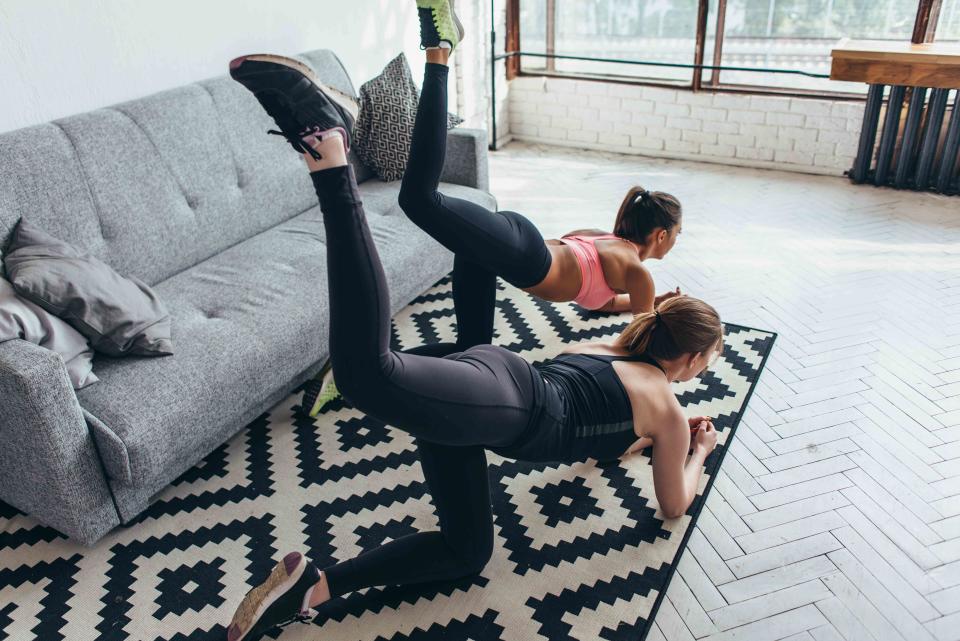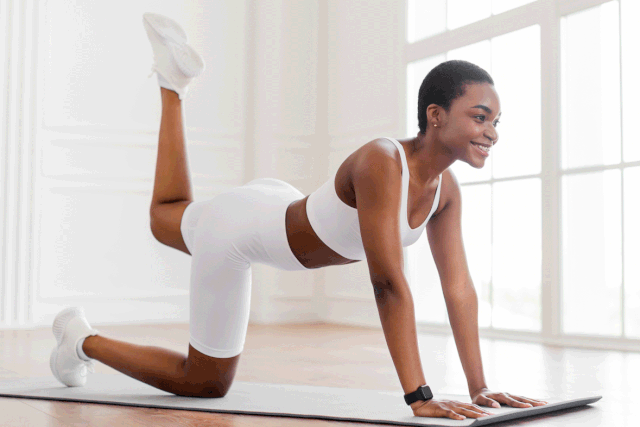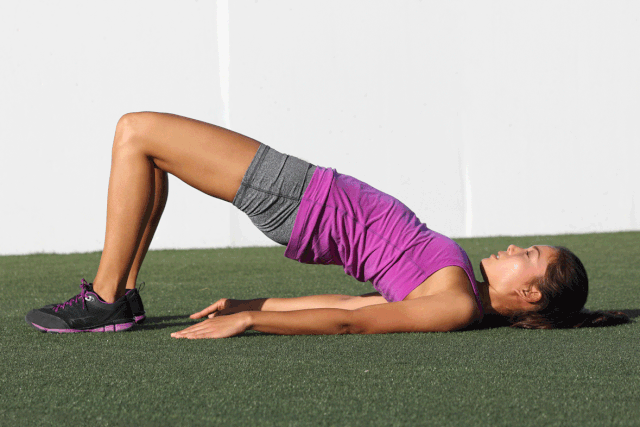How to Do Hyperextension Exercises (Without Hurting Your Back)
For lower back and glute strength, master the art of hip hyperextensions—here’s how.

Undrey/Getty Images
Hip hyperextension exercises are an important, if often tricky, workout move that involve extending your leg behind the line of your hips, taking your body into a position of extension. Exercises that bring your hip joint into hyperextension can really strengthen your lower back, glute, and hip muscles. But without proper form and attention, hyperextensions can irritate your back. Here’s what to know about this type of exercise, and how to do them safely and effectively for strong back-of-body muscles.
Related: How to Do Calf Raises to Fire Up Your Leg Muscles and Improve Your Balance
Hyperextension Definition
Extension refers generally to a body position in which the angle of the joint between two bones increases. For example: kicking your leg out behind you, or doing glute bridges. The opposite of extension is flexion, where the angle of the joint decreases. For example: kicking your leg forward, or bringing your knee up to your chest. Hyperextension, therefore, is a more extreme type of extension.
If you're a dancer, or you’ve seen dancers perform an arabesque, that’s one good example of a body in hyperextension. If you’ve ever held a superman pose on the floor with your legs out straight and lifted behind you—engaging your glutes, hamstrings, and back muscles (some of the main hip extensor muscles)—that’s another example of the body being in a position of hyperextension.
Health Benefits of Hyperextensions
It’s hard to find a workout move that strengthens and benefits so many different important areas. “Hyperextensions are an effective exercise to strengthen the posterior chain (lower back, glutes, and hamstrings),” says Layla Luciano, fitness trainer, athlete, and owner of Level Up! With Layla.
The targeted muscles in question include the main hip extensors: your glutes muscles (aka your butt muscles), as well as the hamstrings. Research published in the Journal of Physical Therapy Science affirms that glute strength is essential for lower back functioning, strength, and pain prevention, so it’s worth mastering the art of hip hyperextensions and exercise that utilize this body position.
Hyperextension Form to Prevent Back Irritation
In general, hyperextension, or overextension, can mistakenly involve arching your back too much—and this can result in overload and irritation in the lower spine.
“Overextending in a hyperextension can put your back in a compromised position, compressing and overloading the spine,” explains Sarah Pace, Arizona-based ACE-certified personal trainer, health coach, and program and engagement manager at HealthFitness. “Remember that more isn’t necessarily better, and a small range of motion done correctly will strengthen the targeted muscles.”
One key to doing hip hyperextensions without hurting your lower back, is to maintain neutral posture in your spine—the joint hyperextension occurs at the hip joints (where your legs feed into your pelvis) and not in the joints of your lower back (or lumbar spine).
A spine in neutral posture is in the middle of its natural range of motion. Neutral posture should maintain the natural, comfortable curvature of your spine, but without arching back (e.g. sticking your tailbone out), or curving forward into a C shape.
When performing exercises with hyperextensions, Pace says to ensure your glutes (and not your lower back) are doing the majority of the work by both actively squeezing your glutes and keeping your core muscles really engaged throughout the entire exercise.
Hyperextension Examples and Exercises
Glute Kickbacks

Getty Images
This exercise, also called a donkey kick, targets the glutes and also sneakily fires up your core, Paces says: “Pull your abdominal muscles tightly in toward your back and keep your spine in a neutral position.
Start on your hands and knees.
Keeping your right leg bent at a 90-degree angle, lift your right leg up off the floor, squeezing your right glute and pressing your right heel up toward the ceiling. Stop lifting before you feel the need to arch your lower back or rotate your body to either side.
Slowly lower back to the starting position.
Repeat on the other side, lifting your left leg up and lowering it with control.
Repeat 10 times, alternating legs.
Glute Bridges

Getty Image
Did you know this classic glute exercise involves hip hyperextension? Glute bridges “target the gluteus maximus, medius, and minimus,” Luciano says, and also activate the important small muscles that protect and mobilize your lower back.
Lie on your back on the floor. Bend both knees and place your feet flat on the floor and place both arms on the floor along your sides.
Engage your core, gently squeeze your glutes, and push into the floor with your feet.
Lift your hips up off the floor about 6 to 8 inches. “At this top position, your torso should make a straight line from your shoulder to your knee,” Luciano says.
Lower your hips back down in a controlled motion without releasing the tension in your abs and glutes,” says.
Repeat 10 times.
Modifications and Tips
Having trouble maintaining neutral posture during hip hyperextensions? Try modifying by decreasing your range of motion. Make your leg movements smaller, so you can focus on not altering your posture—and not losing core or glute activation—throughout the set. As you build strength and become more comfortable, your leg motion will increase. A great way to modify to make it more challenging: Move at a slower pace—this will keep your muscles under tension for longer, providing more intensity
For more Real Simple news, make sure to sign up for our newsletter!
Read the original article on Real Simple.

